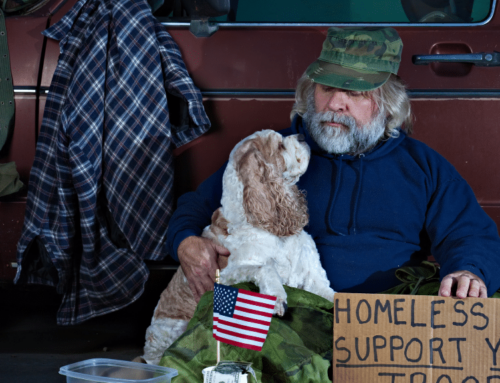Myths and Misconceptions About Homelessness
In January 2020, the total number of homeless people in the United States was estimated to be 580,466—more than half a million. Still, in spite of how widespread and pervasive the issue of homelessness is, myths about homeless individuals continue to abound. These misconceptions about homelessness aren’t just untrue—they’re often actively harmful to homeless individuals, including homeless veterans, and efforts to help them.
Myth: Homeless Individuals Are Violent or Dangerous
This idea has been soundly disproven by research. In fact, homeless individuals are more likely to be victims of violent attacks than perpetrators. Accurate data about the frequency of violence against homeless persons can be hard to find, since many attacks go unreported. However, one 2014 report found that 49% of study participants had been the victim of a violent attack while homeless. Sadly, some experts believe that the rate of violence against homeless individuals is increasing.
Unfortunately, when homeless individuals do commit acts of violence, these incidents are often sensationalized to a much greater extent than those committed against homeless individuals. Misrepresentation by the media is a big part of why this myth continues to persist.
Myth: Homeless Individuals Are Lazy and/or Choose To Be Homeless
Our society sees homelessness as a moral failing. As a result, many people tend to believe (whether consciously or subconsciously) that people who are homeless must have made bad choices that led to their homelessness or that they simply refuse to get a job.
The reality is much, much more complicated. Many homeless people do have jobs, but still can’t afford rent. Many more would probably welcome a job opportunity, but their current circumstances (no mailing address, no computer, no access to shower or clean clothes) make applying for a job tremendously difficult, if not impossible.
It’s also unfair to assume that all homeless individuals actively and consciously chose homelessness. Most of the biggest risk factors for homelessness (such as mental illness, substance abuse, high healthcare costs, domestic violence, poverty, and lack of affordable housing) are outside of individuals’ control, or could have been prevented with appropriate and accessible social services. There are many, many housed individuals who are only one financial crisis or unexpected bill away from homelessness.
Myth: Eliminating Homelessness Isn’t Possible
A lot of people assume that because we haven’t yet been able to solve the problem of homelessness, doing so isn’t possible. However, this logic is both flawed and simplistic. Experts at Coalition for the Homeless point out that proven solutions to homelessness, such as permanent supportive housing, do exist. Unfortunately, until adequate funds and energy are committed to implementing these strategies, they’ll never be completely effective.
National Veterans Homeless Support seeks to eliminate homelessness among veterans in Central Florida and nationwide. NVHS takes a proactive, intervention-based approach to homelessness by meeting homeless veterans where they are and helping them from there. Through programs like Search and Rescue Outreach, NVHS helps homeless veterans get the supplies they need to survive, connects them with support and resources, and helps them transition off the streets and into temporary or permanent housing. If you’re able, consider supporting our mission by donating or signing on as a volunteer.





